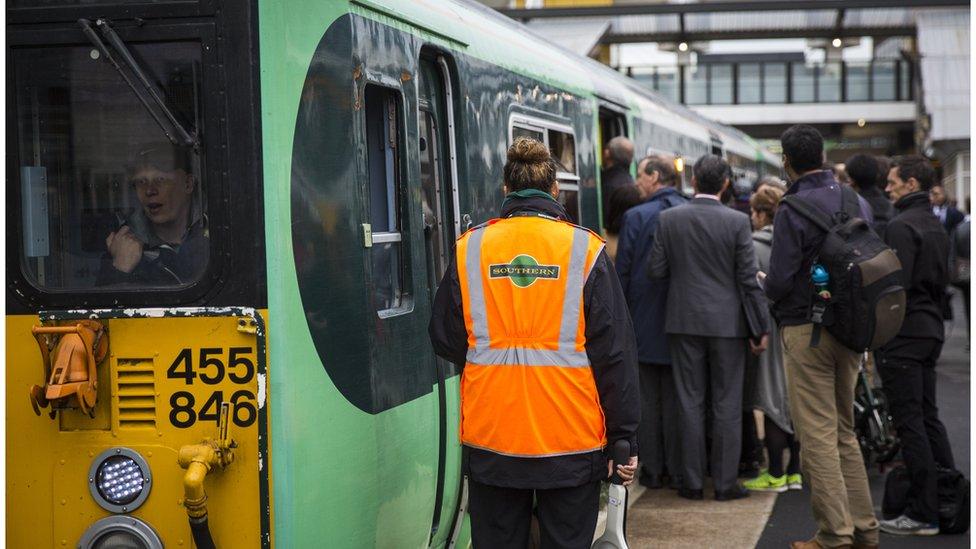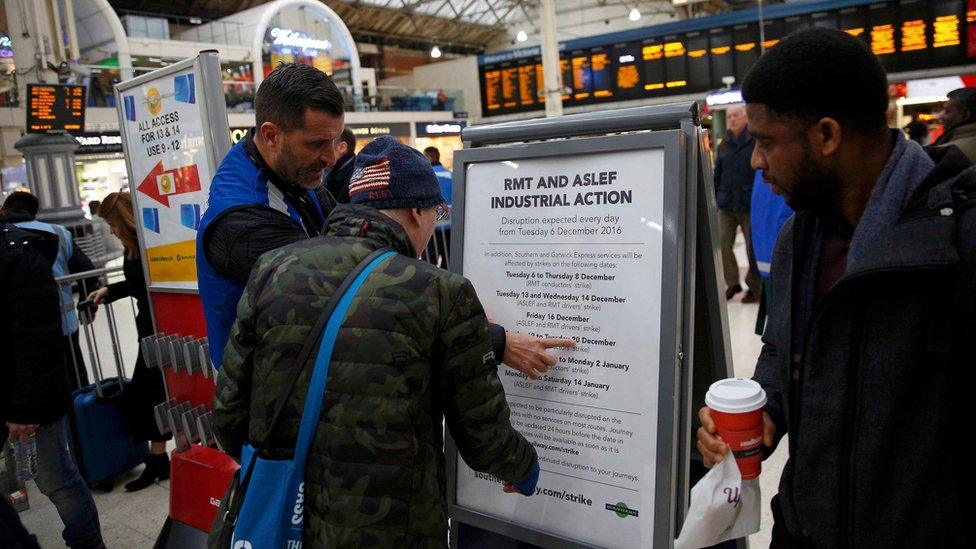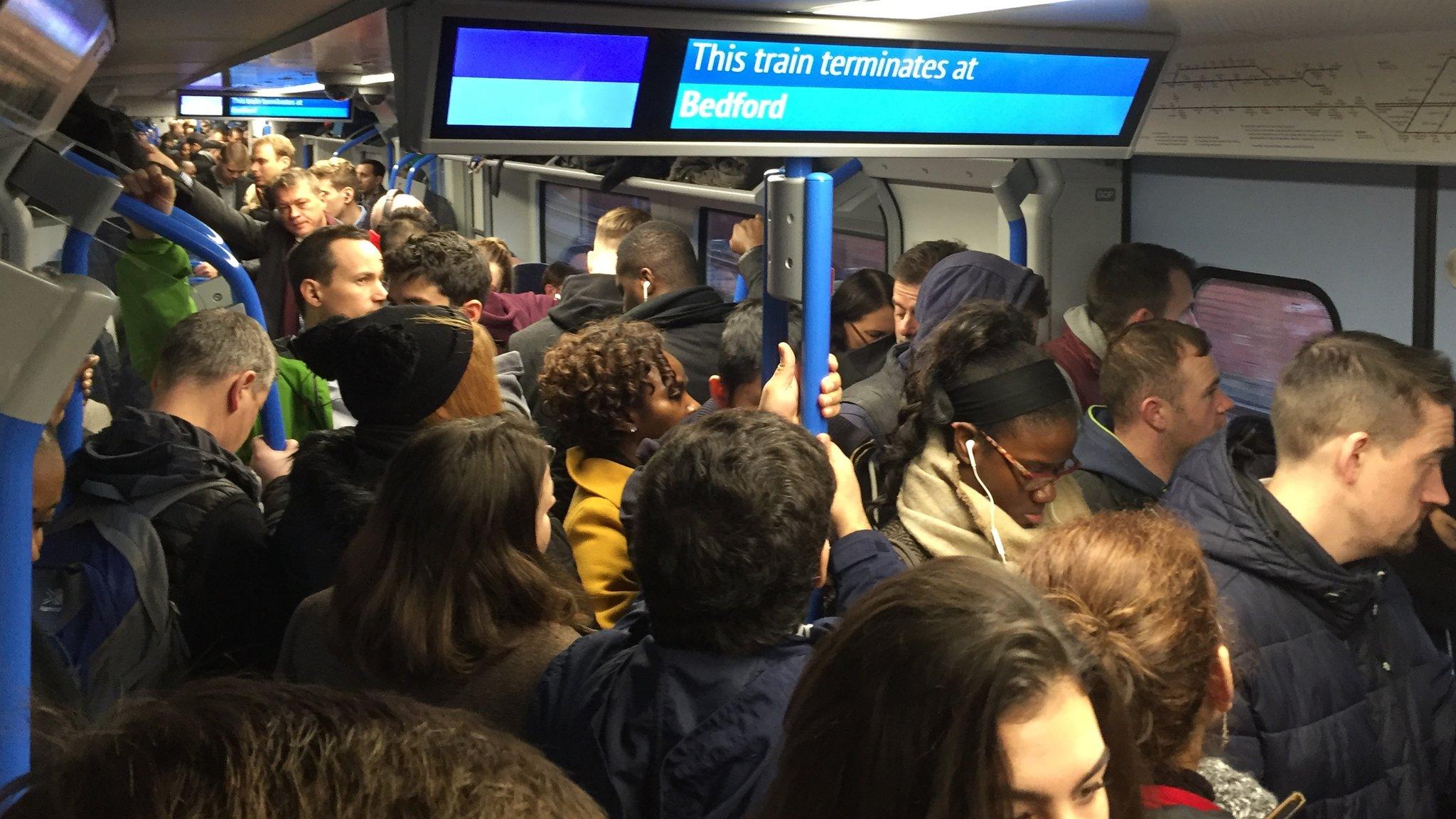Reality Check: Are train stations getting less safe?
- Published

The claim: General secretary of drivers' union Aslef Mick Whelan said on Tuesday morning that rail safety, at the centre of the Southern rail strikes, has deteriorated in recent years.
Reality Check verdict: Slightly more people were hurt getting on and off trains last year than the year before, but overall there has been no significant increase in the past decade.
Mick Whelan, the general secretary of Aslef, the train drivers union, said: "We have had an awful increase in the number of people falling between the platform and the train."
The unions who are behind Tuesday's strikes on Southern trains say the dispute is about safety on the railways.
Southern wants to give control of train doors to drivers and says there will still be a second member of staff on board.
'No significant increase'
Unions argue removing a conductor who is responsible for opening and closing the doors makes it more dangerous for passengers getting on and off trains at stations.
The number of people falling between the train and the platform while getting on or off a train was up slightly last year but lower than it was two years ago, according to the independent Rail Safety and Standards Board.
Overall, it concluded, over the past 10 years there had been "no significant increase" in the number of people falling between the train and the platform.
In 2015-16, it recorded eight passengers' deaths on the railways, up from four in 2014-15 and the highest number since 2006-07, but none of them resulted from people falling between a train and the platform when getting on or off a train.
Two fell between a train and the platform, but both incidents were after the doors had closed and the train had set off.
The regulator makes a clear distinction between people hurt getting on and off trains and those falling between the platform and a train arriving or departing.
Overcrowding
The other fatalities were caused, external by passengers falling in front of a train, on to the track or on to the electric rail.
The Rail Safety and Standards Board also recorded a murder, a passenger who died after a violent assault and a passenger killed when a road sign was blown down in high winds.
There are some concerns about station safety, but the railway's safety watchdog, the Office of Rail and Road (ORR), does not believe the driver controlling the doors of trains is the problem.
The sheer number of people using the railways - journeys are up by 57% in the past decade - is creating overcrowding at some stations.
This causes particular problems when the platforms are curved, making it harder for staff to see what is happening.
The ORR said in July, external that most train companies managed the safety of passengers on the platform well and had good systems in place but "careful assessment of the different risks caused and controls needed to dispatch trains safely and efficiently" was needed as drivers increasingly took over the opening and closing of doors.
However, Ian Prosser, HM chief inspector of railways, was emphatic in a letter to the Transport Select Committee, external last month.
Drivers operating the doors, if properly managed, "is a safe method of working", he said.

- Published13 December 2016

- Published13 December 2016

- Published12 December 2016
